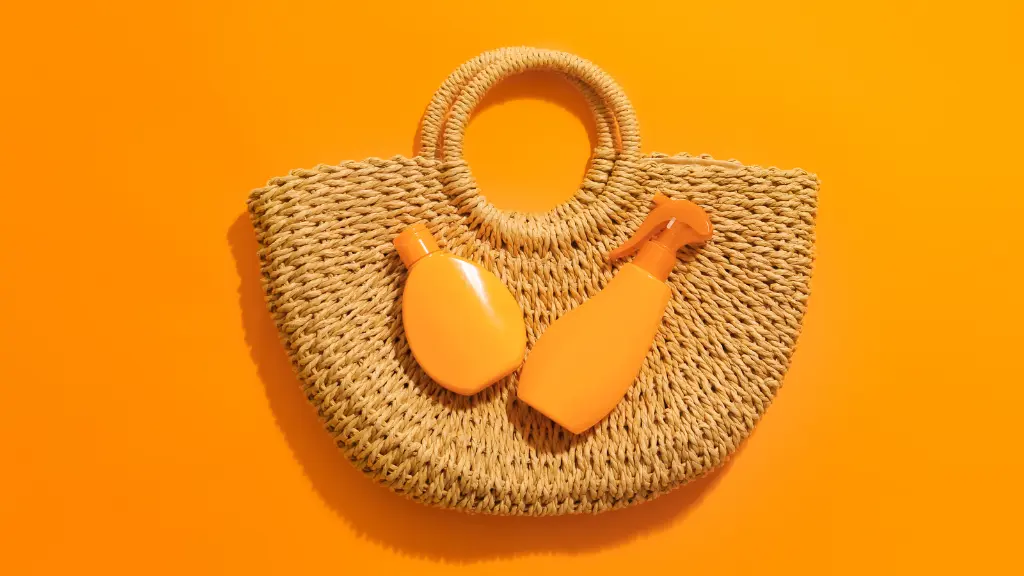Sunscreen is a skincare essential, but what happens when you add makeup to the mix? Many wonder if their favorite beauty products could be interfering with their sun protection. The answer is a bit complex; certain makeup techniques, ingredients, and layering methods can impact sunscreen’s effectiveness.
If you’re passionate about skincare but still love a full face of makeup, understanding how to use sunscreen effectively with makeup can make all the difference.
In this guide, we’ll explore how makeup can affect your SPF and how to apply products for the best possible sun protection.
You May Also Like: Is Chocolate Good for You?
1. Understanding Sunscreen and Its Importance
Sunscreen protects your skin from harmful UVA and UVB rays, which can lead to premature aging, sunburn, and even skin cancer. Whether you’re spending the day outside or just running errands, sunscreen is a must to prevent damage and keep your skin healthy.
Key Benefits of Sunscreen:
- Prevents Sunburn: Sunscreen blocks UVB rays that cause burning and redness.
- Reduces Signs of Aging: Protects skin from wrinkles, fine lines, and hyperpigmentation.
- Protects Against Skin Cancer: A regular sunscreen routine is one of the best defenses against skin cancer.
When used correctly, sunscreen acts as a shield. However, certain application techniques and products can impact its effectiveness.
2. Does Makeup Interfere with Sunscreen Protection?
Applying makeup on top of sunscreen can interfere with its ability to protect your skin. Sunscreen works best when it forms an even, undisturbed layer on the skin. When makeup products are rubbed, blended, or layered on top, they can disturb this layer and reduce its effectiveness.
Key Factors That Impact Sunscreen:
- Blending Makeup: Using brushes or sponges can move sunscreen around, creating gaps in protection.
- Ingredients in Makeup: Some makeup ingredients may interact with sunscreen, affecting its stability and effectiveness.
- Layering Techniques: How you apply and layer products influences how well your sunscreen works.
To keep sunscreen effective, it’s essential to layer carefully and avoid disturbing it after application.
3. How to Layer Sunscreen and Makeup for Optimal Protection
Layering sunscreen with makeup requires a thoughtful approach. Here’s a step-by-step routine to ensure you get maximum protection without compromising your makeup look.
Step 1: Choose the Right Sunscreen
- Opt for Broad-Spectrum SPF 30 or Higher: Broad-spectrum sunscreens protect against both UVA and UVB rays. For all-day wear, aim for SPF 30 or above.
- Choose a Lightweight, Non-Greasy Formula: Look for sunscreens that absorb well and won’t disrupt makeup. Gel-based and mineral sunscreens are often good choices.
Step 2: Apply Sunscreen Liberally
- Use a generous amount—around a nickel-sized amount for your face.
- Allow your sunscreen to fully absorb into the skin (about 5–10 minutes) before applying makeup.
Step 3: Apply Makeup with Minimal Disturbance
- Avoid Rubbing: Use a light hand when blending foundation or concealer.
- Dab Instead of Swipe: Opt for a dabbing motion with sponges or fingers to avoid moving sunscreen around.
By letting each layer set before applying the next, you can keep your sunscreen intact.
4. Choosing Makeup Products with SPF
One way to ensure you’re fully protected is by incorporating makeup products with SPF. Many foundations, powders, and setting sprays contain SPF, which can add an extra layer of protection. However, these should not replace your primary sunscreen.
Benefits of SPF Makeup:
- Boosts Your Sun Protection: Layers of SPF can offer slightly better protection, but it’s still best to apply a dedicated sunscreen underneath.
- Great for Touch-Ups: SPF powders and sprays can be used for reapplying throughout the day.
Just keep in mind that makeup SPF is supplementary—it doesn’t replace the need for a proper sunscreen layer.
5. Touching Up SPF Without Ruining Your Makeup
Sunscreen should be reapplied every two hours, but this can be tricky if you’re wearing makeup. Fortunately, there are a few ways to reapply SPF without disturbing your look.
Ways to Reapply SPF with Makeup:
- SPF Powders: These are an excellent option for adding protection without heavy layers.
- Setting Sprays with SPF: Look for makeup setting sprays that contain SPF for a quick refresh.
- Sunscreen Sticks: Some sunscreen sticks are designed for use over makeup and can be gently dabbed on key areas like the nose and cheeks.
These products make it easier to stay protected all day long.
6. Common Makeup Mistakes That Can Undermine SPF
To keep your sunscreen working effectively, try to avoid common makeup application habits that may reduce SPF protection.
Makeup Application Mistakes to Avoid:
- Over-Blending: Excessive blending with sponges or brushes can break down the sunscreen layer.
- Applying Too Many Layers: A thick layer of foundation or powder can reduce sunscreen effectiveness by creating a barrier.
- Skipping Moisturizer: If you have dry skin, apply a moisturizer before sunscreen. Dry patches can cause sunscreen to absorb unevenly.
With careful layering, you can avoid these common pitfalls and enjoy both sun protection and flawless makeup.
7. Is Makeup with SPF Enough?
While makeup with SPF is helpful, it’s not a complete substitute for sunscreen. Most makeup with SPF doesn’t provide enough coverage because the average person doesn’t apply enough product to get the advertised SPF level.
Why You Still Need Regular Sunscreen:
- Insufficient Coverage: To achieve the labeled SPF, a significant amount of product is required, which isn’t realistic with foundation or powder.
- Unreliable Protection: Makeup SPF alone won’t protect you during extended sun exposure.
Applying a sunscreen base underneath makeup remains the best way to ensure thorough protection.
8. Best Sunscreen Formulas for Wearing Under Makeup
If you’re planning to wear makeup, certain sunscreen formulas are better suited to a layered approach.
Types of Sunscreens That Work Well with Makeup:
- Mineral Sunscreens: These contain zinc oxide or titanium dioxide, which provide effective UV protection and sit well under makeup.
- Gel Sunscreens: Lightweight and non-greasy, gel sunscreens are often compatible with makeup.
- Priming Sunscreens: Some sunscreens double as makeup primers, creating a smooth base for foundation.
Look for formulas labeled as “makeup-friendly” or “lightweight” for the best results.
9. How to Maintain Skin Health Under Makeup and Sunscreen
Using sunscreen under makeup is one part of the equation, but proper skincare is also essential to keep your skin healthy.
Skincare Tips:
- Cleanse Thoroughly: At the end of the day, use a gentle cleanser to remove both makeup and sunscreen residue.
- Hydrate and Moisturize: Keeping your skin hydrated will help it better absorb sunscreen and makeup.
- Exfoliate Regularly: Exfoliating once or twice a week removes dead skin cells, creating a smoother surface for even sunscreen application.
Proper skin care will ensure that your skin remains healthy, radiant, and well-protected from the sun.
Conclusion
Yes, makeup can interfere with your sunscreen’s effectiveness, but with a few smart techniques, you can enjoy the benefits of both. By choosing the right products, applying sunscreen first, and using SPF-friendly makeup, you’ll keep your skin safe and maintain a beautiful look.
Don’t skip the sunscreen just because you’re wearing makeup! With thoughtful layering and regular touch-ups, you can protect your skin and enjoy the best of both worlds.










